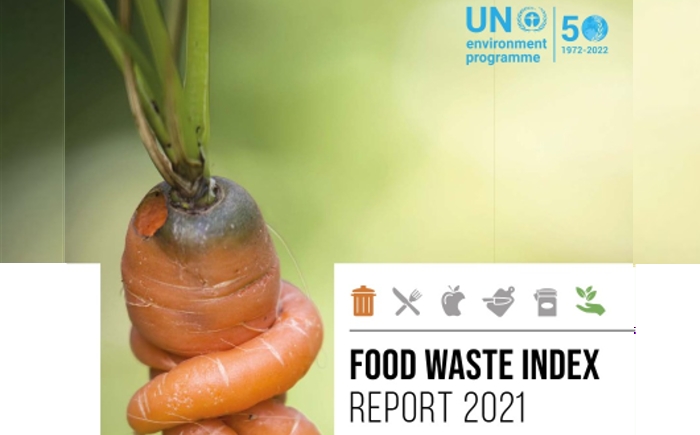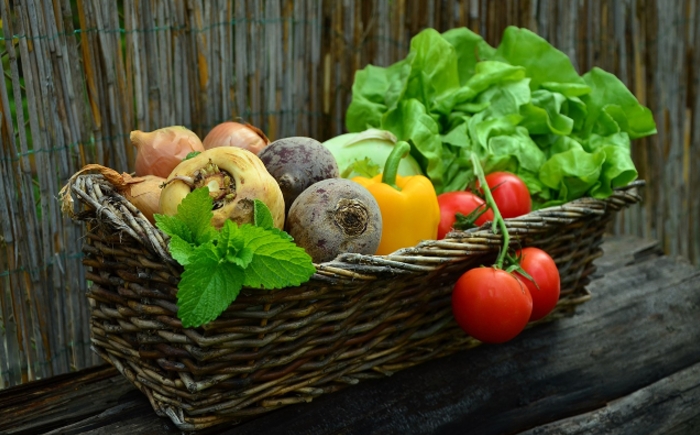The UNEP’s first food index report published (PDF) estimates that some 931 million tonnes of food are wasted annually and 17% of that is food available to consumers from shops, restaurants, as well in the home. Furthermore, it is estimated that around 570 tonnes of waste is at the household level. Thus, household waste represents around 61%. This is a colossal amount of food waste, particularly considering the number of people across the world who do not have enough to eat. However according to UNEP, previous figures of food waste have been underestimated but appear similar across high, upper middle, and lower middle income countries. How much food is wasted in the UK every year? We know it’s a lot but where does most of it come from and why?

The latest estimated figures2 (updated in 2017 but estimated from 2015) indicate that about 10 million tonnes, or £17 billion of food is wasted each year in the UK (whether it is rising or dropping by year is unclear, although data from the recent lockdowns suggest that it dropped in 2020); about 60% of that could be avoided. Most of that waste comes from households and the food industry, although all causes impact on each other.
That’s a shocking amount of waste, especially when much of it is avoidable. Household food waste allegedly makes up 70% of the UK post-farm total, and manufacturing, hospitality and food service, and retail represent 17%, 9%, and 2%, respectively. In addition to that, which is alarming enough, 710,000 tonnes of food surplus from food manufacturing and retail businesses are either being redistributed by charities or commercial routes (47,000 tonnes in 2015) or used to produce animal feed (660,000 tonnes in 2015). All this in the days when food banks are a necessary part of life for many people, and many others are homeless or living in temporary accommodation (also classed as homeless).
What can be done to limit the amount of food waste?
One suggestion mentioned in the UNEP report was to encourage people to only buy what they will eat. So perhaps buying what you want on a daily or two-daily basis. However, that can be expensive especially when buying from express-style local supermarkets and even (at least in the UK) buying from independent butchers and fishmongers etc., can be expensive, although I am all for supporting local producers, and the quality tends to be far higher than in multi-chain supermarkets.

Another idea that I personally believe would be helpful is to re-educate people about the ‘best before’ and ‘use by’ dates, which essentially limit the liabilities of the producers and manufacturers, and the shops selling their goods. They have researched and estimated how long it will take their produce to deteriorate to inedible or toxic status. But these are still just guidelines. Let’s look at chicken, the most likely meat to turn rancid whether due to poor packaging, handling or often supermarket storage. Often, you can open a sealed pack of supermarket chicken (well within the use-by date) and it will have an iffy smell, sometimes subtle, but sometimes it can be overpowering, and you definitely won’t feel any desire to eat it. Depending on the strength of the iffy smell, I either take it back to the shop (however it will still be classed as food waste) or use it if the smell is mild (after salting it and rinsing it in lemon juice). I swear nobody has died yet.
A good many years ago now, and even today if you buy from some small local butchers, there were no use by, sell by, or do anything else by dates. But for a very long time now, all food has had use by/best before dates on all sorts of foods. Many people follow these religiously (I personally know several who do) and have no idea on how to use their senses to assess useability such as checking the smell, inspecting foods to see if they look edible, touching them to see texture, tasting a tiny piece (obviously not of raw chicken or meat). Many seem unable to make any kinds of sensory judgements because most people are used to or have been instructed by well-meaning parents and carers to throw out stuff based on its use by/best before date. On top of that they and their parents before them were terrified into following these guidelines due to the media and government’s exaggerated and scaremongering statements about food safety.
It’s a shame because many people have now lost the ability that our ancestors developed over millennia to protect themselves through trial and error (through sight, touch, taste and smell) from poisonous plants and lethal food-borne diseases. They’ve been bombarded with messages for decades to be ultra-paranoid, ultra-dependent on processed foods and worst of all, to not use common sense.
In fact, if you ferment food like I do, and happen to do some research on the internet, you will find countless documents about ‘safety’. How kefir, kimchi, and sauerkraut etc., can be ‘dangerous’. These foods have all been consumed for millennia and are some of the healthiest foods on the planet. But the ‘experts’ want us to believe that there are hidden microbes lurking in every container if it’s not processed to death.

Raw meats: look at it, sniff it, turn it over and inspect. If it has a slight smell, which doesn’t threaten to keel you over and it doesn’t have mad patches of discolouration (yellowing in chicken and browning/greenish in other meats), then you can cook it and it will be fine. The thing you need to remember is that if you cook meat thoroughly, for long enough you are killing off any germs in it. Once it’s cooked, remember to put any leftovers quickly into airtight packaging and store in the fridge once cooled.
Keep eggs in the fridge if you want them to last longer than the sell by/use by date (we don’t because we use loads of eggs).
Cheese: smell, taste, and look at it. If it’s a mouldy or blue cheese, it’s harder to tell, but I have eaten cheese well outside it’s ‘use by’ and I’m writing this. Even mature ‘aromatic’ blue and brie/camembert mould-ripened type cheeses gain an ‘off’ smell, a little like ammonia, when they might not be so good to eat. Cheddar cheese might get small amounts of whitish mould on it with time but it’s not dangerous and you can cut it off and still use the rest.
Yoghurt: look at it, sniff it and taste it. If it doesn’t taste super-sour, then it will be fine.
Vegetables: if they’re not mouldy, slimy, really bendy, or have lost a lot of their colour they will be ok. And in fact, they are probably ok if they are bendy and lost some of their colour as long as they are not mouldy/slimy.
Fruit, if it’s not mouldy, brown, or wizened it will be fine. (Even wizened just means it’s drying out naturally so when there is no mould present so you could still use it in cooking — it might not be that appetising to eat without cooking though.)
Milk and cream: use it unless it smells like cheese or has gone kind of lumpy or developed a greenish hue.
Broth: I make bone broth regularly using marrow and other bones, oxtail etc., and keep it up to a week/ten days reheating refrigerated portions as needed. As long as you thoroughly heat it each time, you will come to no harm.
Home-made stews, curries, chilli etc: We keep them for up to about 4 days (if not eaten by then) and just heat up portions as needed, keeping the rest in airtight containers in the fridge or freezer.
Home-made cooked chicken, lamb, pork or beef will keep up to about 3 or 4 days if you want to eat it cold and about 5 if you want to reheat it. You can also freeze it — I do that within 1 day of cooking (storing it in the fridge in the meantime in an airtight container).
Home-made fermented foods: using sense of smell and taste and vision can tell if it’s no longer safe to eat. However, once in the fridge, it’s unlikely to go ‘off’ and these foods can last for a very long time (I have a particularly spicy kimchi – so I can only eat small amounts at a time -- that is over a year old but it’s still safe to eat).
The foods I would tend to be most careful about if you eat them are processed cold meats and other processed foods, and fish/shellfish-based foods as they can go ‘off’ very quickly.
While the reduction of food waste obviously needs to be addressed, there is no doubt that at the root of it lies consumerism and mass production, which in itself produces a lot of unnecessary waste. In an ideal world, people would be able to grow their own food and raise their own stock, and food wastage would then be minimal to non-existent. As it was throughout human history among many civilisations and eras.
So, before you automatically chuck out the two-day-out-of-date stuff you found in your fridge (and of course I am not referring to the stuff at the back of the fridge that went out of date three months ago), use your senses and decide for yourself whether it looks, smells, and tastes normal and is most likely safe to use.
What is not written does not exist.
© The International OutsiderC0.Reg.No SC715702 . All Rights Reserved. Design by HTML Codex